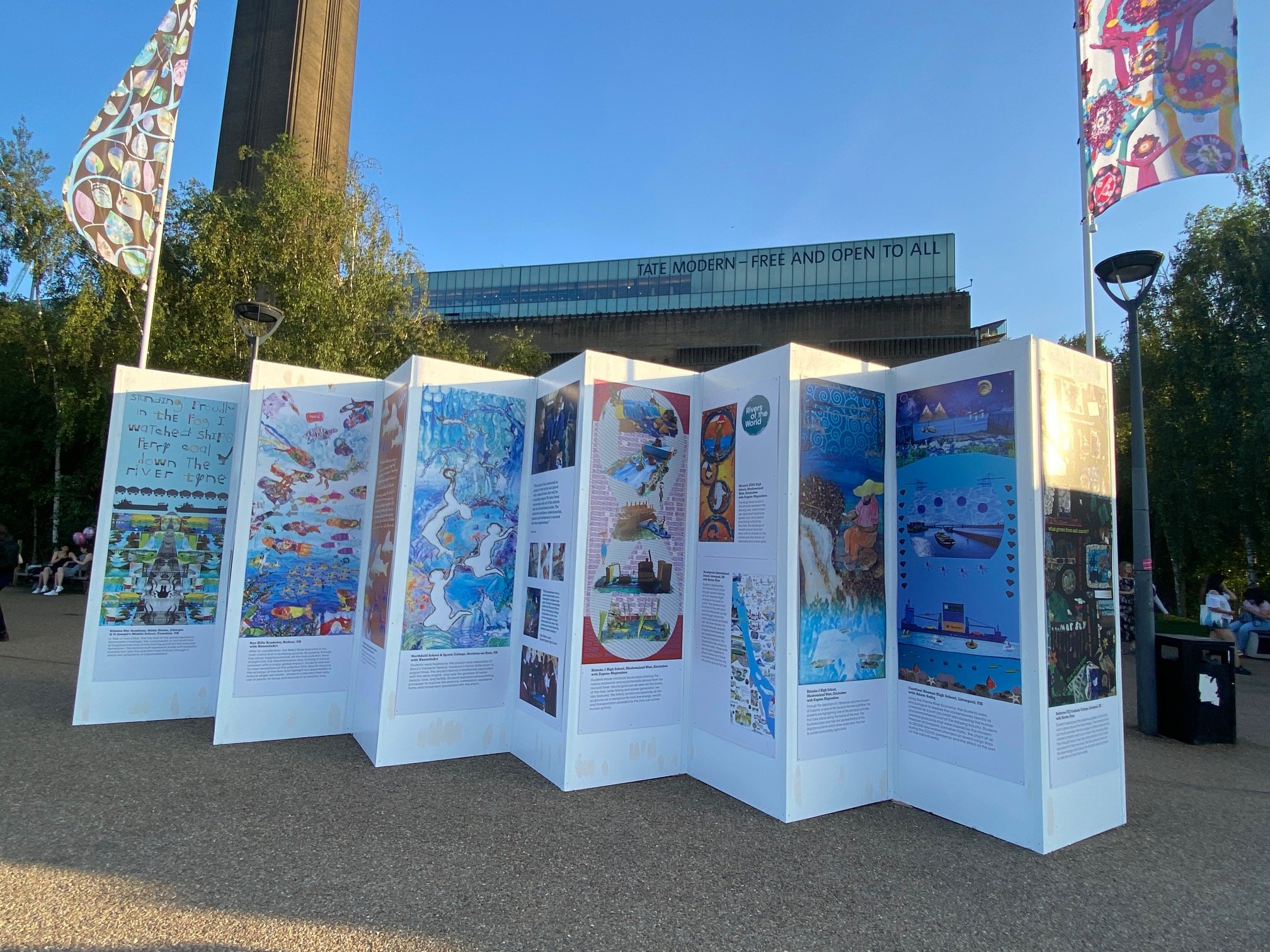
Rivers of the World is a Thames Festival project that aims to connect young people with local and international landscapes. Supported by Metal Liverpool we delivered a series of workshops with three Liverpool schools and delivered an exhibition with three other Liverpool schools and three schools from Zimbabwe with artists Hector Dyer and Eugene Mapondera.
As part of Liverpool’s contribution to the Rivers of the World projects from March to September 2021 we ran a series of workshops that engaged young people with creative activities intersecting art, science and culture. In 2021 we delivered online workshops to three Liverpool schools and based our activities on creating augmented reality postcards that explored a way to reveal duality in artistic responses that explored tensions and visions of the past, present and speculative future of the River Mersey.
Walking the Mersey
To collect images to make these postcards in April 2021 Adam walked the length of the River Mersey and one of its three tributaries (the River Goyt in case you were wondering!). Following the recent national lockdowns it was an incredible experience to take the train to the Peak District and take a three day walk home, stopping at a few campsites on the way.
If you ever want to take this journey for yourself you should check out this amazing blog that will give you all the routes you need (probably safe to bring an OS map as well). In a series of workshops with each school we explore themed responses to create postcards based on the River Mersey to explore a duality that we could reveal with augmented reality.
In each session the groups learnt skills in Photoshop and how to source images from the Creative Commons to create their collages. At the end of the sessions created a series of postcards using Spark AR to create augmented reality effects. View the gallery below and try the QR codes on screen with Instagram working on your phone to try the AR effects out!
Workshops with each school explore a themed response for the group to explore their local river:
-
Cardinal Heenan explored the relationship between the Port of Liverpool and container traffic from around the world alongside the culture of the city of Liverpool and the impact of consumerism on the planet. For some of these images we were able to work with drone photographer Ben Simpson to explore the landscape of the container port as well as doing some urban exploring along the river and taking the ferry to capture skyline imagery. Responses by the group brought together imagery of shipping containers and goods from around the world alongside aspects of city life in Liverpool.
-
Broughton Hall explored the relationship between nature and culture looking at how rivers can be thriving habitats, how people who live on them rely on them yet also have the potential to misuse and poorly care for them. We explored the species of plants and animals that live on the River Mersey, the idea of rewilding and past species as well as sources of pollution and waste. The images from this section were taken from the source of the River Goyt down to Sale Water Park in Greater Manchester. Responses saw Cormorants, Whales, Salmon and Sea Holly (the flower of Liverpool) in one layer alongside images of plastic and industrial waste in the other.
-
Woodchurch Highschool explored the relationship between the rivers past and future, creating a response to Langston Hughes poem, The Negro Speaks of Rivers and tying this to Liverpool’s role in the Transatlantic Slave Triangle. The duality they explored was to imagine Liverpool and the Merseys future, with some utopia, dystopia and sci-fi responses thrown in. To make their postcards the groups used images taken from the city of Liverpool and the Mersey and the start of the Manchester Shipping Canal.

Exhibitions
At the end of the sessions we created three large scale artworks from the materials created by each school. These were exhibited at Thames Festival outside the Tate Modern, at Open Eye Gallery Liverpool and in Zimbabwe with our partner schools, alongside a range of amazing works by other artists.
We were also able to deliver an in-person exhibition visit and workshop with each of the groups in September 2021 at Open Eye Gallery and the National Museums Liverpool where we finally met the young creators in person and created new live augmented reality remixes of our original works in Adobe Aero.
See the final three artworks below and an example of the AR effects working. You can also try out the QR codes to see the effects.
Download the Resource
All the learning resources can be accessed above, including Photoshop templates for the postcards, a sticker selection, a series of video tutorials, an Adobe Aero AR worksheet (requires iPad) and the three themed lesson plans for each class. If you wish to follow the activities in your own class please download and adapt the resources as you see fit as long as you attribute the resources made by Ecosystem 2 when you make your own original art works.
We intend to produce a resource on Spark AR in future for this aspect of the project but have included our original effect template that should help you get started.
A final mention and huge thank you has to go to Metal Liverpool who organised and supported the delivery of the project.
Trying AR effects
Spark AR
Adobe Aero













